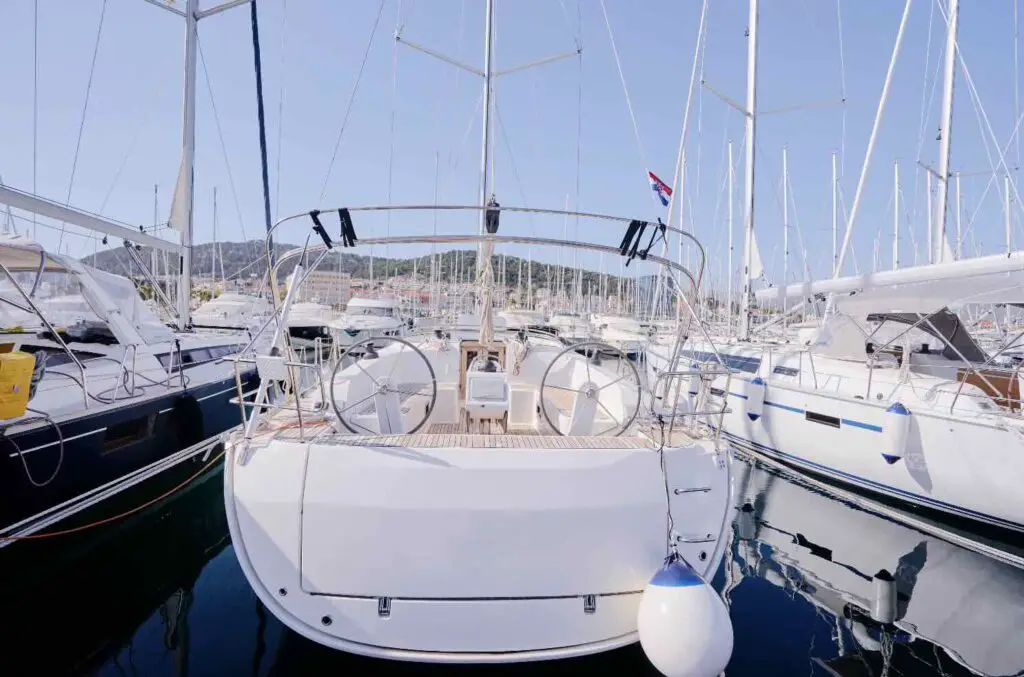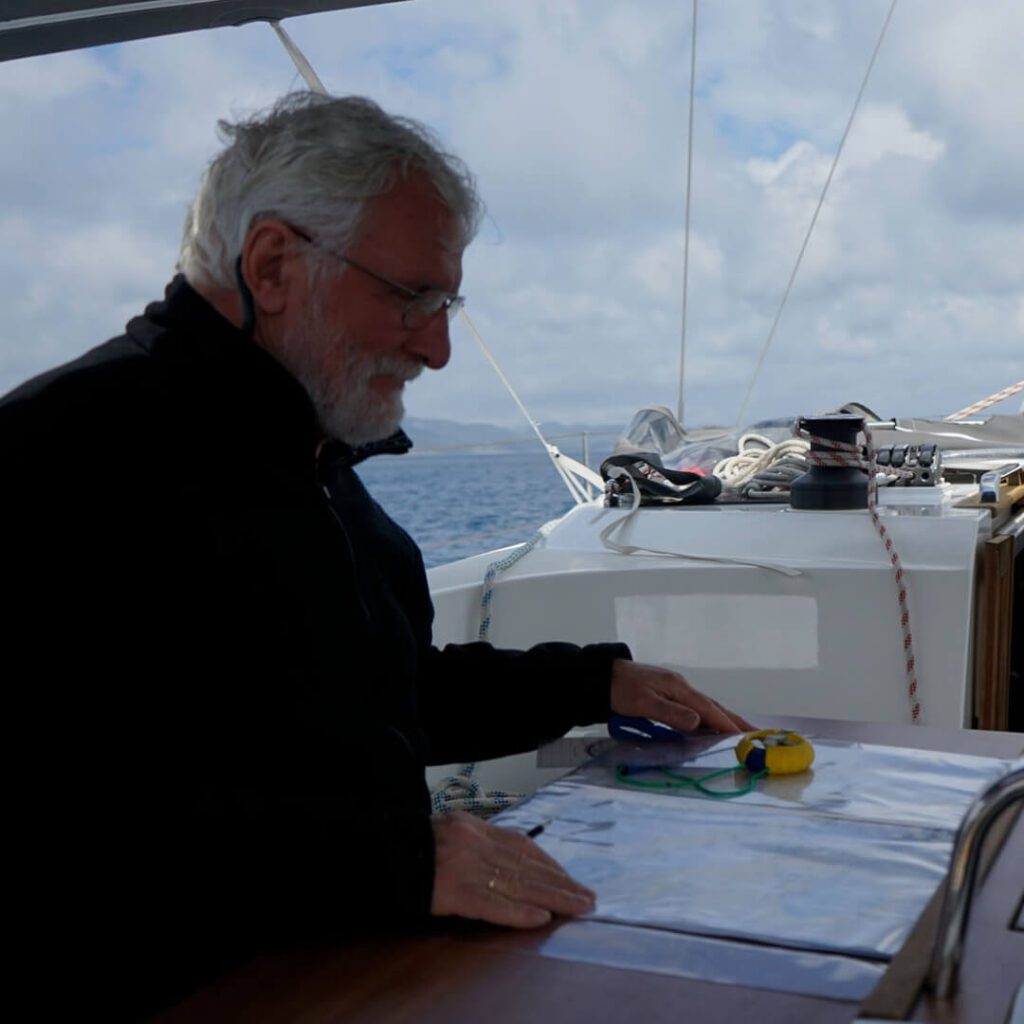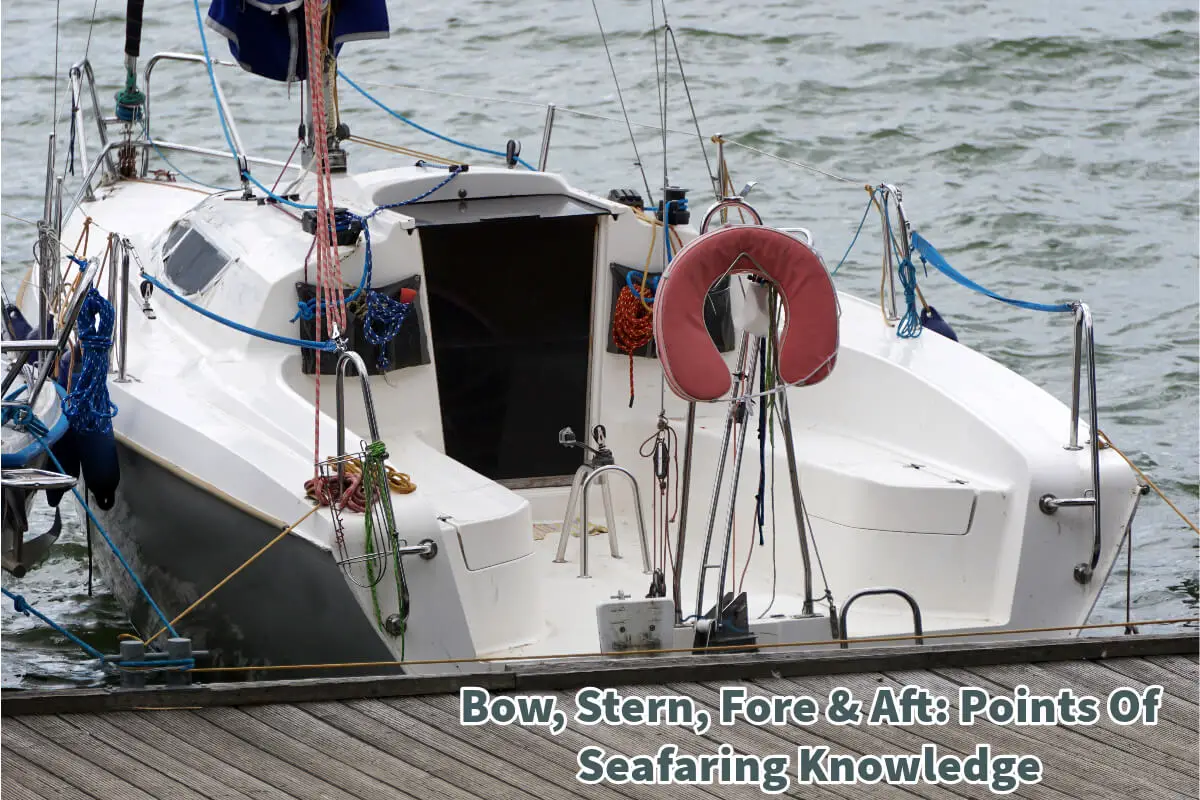My passion for sailing has grown immensely, and recently, I’ve embarked on a more severe sailing journey. One of my greatest pleasures is taking my boat out on the sparkling waters of Lake Michigan during the balmy summer months. However, diving into sailing with a severe mindset means embracing its language.
Essential nautical terms such as ‘Bow,’ ‘Stern,’ ‘Fore,’ and ‘Aft’ become not just words but part of the sailor’s essential toolkit. Let’s set sail into the heart of these terms and discover why a solid grasp of nautical knowledge is not just helpful but crucial for anyone who takes to the seas or the lakes with earnest intent.
Table of Contents
- Bow, Stern, Fore & Aft: The Cardinal Points Of Seafaring Knowledge
- The Mariner’s Vocabulary: A Primer
- The Practicality Of Nautical Terminology
- Operational Coordination
- Docking And Mooring
- Maneuvering In Close Quarters
- Collision Regulations
- Navigating Waves And Weather
- Anchoring And Mooring
- Understanding Vessel Dynamics
- Efficient Sailing
- Communication Aboard And Ashore
- Safety And Rescue Operations
- Preserving Maritime Culture
- Education And Training
- Related Questions
Bow, Stern, Fore & Aft: The Cardinal Points Of Seafaring Knowledge
Navigating the vast and often unpredictable waters requires more than just a physical compass—it demands a lexicon of nautical knowledge.

At the helm of this nautical wisdom are the cardinal terms ‘Bow,’ ‘Stern,’ ‘Fore,’ and ‘Aft,’ each a critical point of reference that has guided mariners through the ages. Let’s journey to understand these fundamental concepts, the very bedrock of maritime tradition and expertise.
The Mariner’s Vocabulary: A Primer
The call of the sea has long drawn adventurers and workers alike to its expansive waters. From the seasoned sailor to the weekend boater, a common thread unites them: the language of the sea. This language, rich and descriptive, serves not just as a means of communication but as a navigational aid and a marker of tradition.
At the heart of this linguistic heritage are four terms as old as seafaring itself: bow, stern, fore, and aft. Understanding these terms is not just a matter of semantics; it is an essential part of safe and successful navigation. We will dive into the origins, meanings, and significance of these fundamental nautical terms.
The Bow: Cutting Through Waves And History
Undertanding the bow is an essential part of any boat or vessel. Below is the definition and significance of the boat’s bow.

Defining The Bow
The bow is the forward-most part of a boat or ship, the point that meets the waves first. Historically, it was designed to be sharp and pointed to allow a vessel to cut through water efficiently.
The design of the bow, from the curve of its hull to the flare of its sides, is a study in hydrodynamics, ensuring that a vessel can move forward with the least possible resistance.
The Significance Of The Bow
Why is it essential for sailors and boaters to know about the bow? On a practical level, all instructions related to navigation and maneuvering will reference the bow. Anchoring procedures, collision avoidance, docking—all these operations and more rely on a crew’s collective understanding of what and where the bow is.
The Stern: The Vessel’s Backbone
The stern is also an essential part of a vessel. Read on as we explore more about the stern of a boat.

Understanding The Stern
Opposite the bow is the stern—the rear end of a boat or ship. While the bow is built for slicing through water, the stern serves different purposes. It’s the location of the central propulsion systems, such as the engines and propellers in motorized vessels, or the steering apparatus, like the rudder in all vessels.
Why The Stern Matters
The knowledge of the stern is crucial for controlling a boat’s direction and for handling the machinery that keeps it moving. Whether you’re docking, steering, or managing speed, activities at the stern are central to these actions. Recognizing the stern line, for example, is critical when coming into a dock or when another vessel is towing.
Fore & Aft: Directions Of The Sea
In the grand tapestry of nautical tradition, few concepts are as pivotal as understanding the directional language of the sea. The terms’ Fore’ and ‘Aft’ are guiding beacons, directing sailors across the churning waters of oceans and the calm ripples of lakes.
Whether a seasoned sailor or a curious landlubber, join us on this voyage to chart the depths of ‘Fore & Aft: Directions of the Sea.’
Fore: The Direction Of Discovery
The term’ fore’ refers to anything situated toward the bow of a boat, indicating a forward direction. When you’re told to move ‘fore,’ you’re being directed towards the front end of the vessel. It’s a term that resonates with progress and advancement.
Aft: The Helm Of History
‘Aft,’ conversely, denotes a position towards the boat’s stern. Moving ‘aft’ means heading to the back. This direction is historically where you’d find the ship’s helm and the captain, making it synonymous with guidance and control.
Navigational Necessity And These Terms
Why do these terms matter? In the high-stakes environment of the sea, clear, concise communication is life-saving.
Directions such as ‘fore’ and ‘aft’ eliminate confusion and ensure that all aboard understand precisely where to go or where to stow gear. For safety, efficiency, and coordination, these words are indispensable.
The Practicality Of Nautical Terminology
Amidst the rhythmic chants of sea shanties and the creak of timeworn decks lies a language as old as the sea itself – nautical terminology. These phrases and words are more than mere communication; they’re an essential lifeline that ensures safety, clarity, and efficiency aboard any vessel.

Read on as we delve into the practicality of nautical terminology, exploring how these time-honored terms are not just relics of the past but crucial tools for modern maritime endeavors.
From the echoing ‘all hands on deck’ to the precise instructions given in the heat of a storm, join us as we navigate the sea of terms that are the backbone of every sailor’s lexicon.
Operational Coordination
On deck, clear instructions are critical. If a captain asks a crew member to bring a line aft, there’s no room for error. In emergencies, understanding these terms can mean the difference between swift safety and potential disaster.
Docking And Mooring
Docking involves detailed knowledge of the boat’s dimensions and handling characteristics, which are inexorably tied to the bow and stern. Knowing how your boat behaves when moving forward or in reverse, how the wind affects the bow versus the stern—these factors dictate docking technique.
Maneuvering In Close Quarters
When operating near other boats or in tight marinas, a sailor must know how the bow will swing when the stern is pushed by the propellers (often referred to as prop walk) and how to use this to their advantage.
Collision Regulations
The International Regulations for Preventing Collisions at Sea (COLREGs) apply different rules depending on whether a vessel approaches from the fore or aft quadrant. Misunderstanding could lead to incorrect action and possible collision.
Navigating Waves And Weather
Heavy weather demands an understanding of how your vessel’s bow and stern will handle large waves. Correctly positioning the boat against swells can prevent broaching and ensure the safety of the vessel and crew.
Anchoring And Mooring
The bow is typically the designated point for anchoring due to its structural design to cut through water and because it’s where the anchor is stored. Knowing how to approach a mooring ball, often from the bow, is another practical application of this understanding.
Understanding Vessel Dynamics
When navigating through narrow channels or making sharp turns, sailors must comprehend how the bow’s cut and the stern’s width will affect the boat’s path. This knowledge helps plot a course that avoids running aground or into channel markers.
Efficient Sailing
For the sailor, knowing how the wind interacts with the bow and stern is vital for setting sails correctly. The angle at which the wind strikes the sails, relative to the bow, determines the points of sail—crucial for effective tacking and jibing.
Communication Aboard And Ashore
The language of ‘bow’ and ‘stern,’ ‘fore’ and ‘aft’ extends beyond the crew. It’s used in dialogue with harbor managers, dock attendants, and other seafarers. Effective communication with these parties can ease berthing and obtaining services.
Safety And Rescue Operations
In rescue operations, precision is paramount. Being able to quickly communicate locations relative to the boat’s bow or stern can aid in efficient and successful rescues.
Preserving Maritime Culture
These terms link to the past, connecting modern mariners with those who charted the unknown seas centuries ago. By using and understanding this language, sailors and boaters keep the rich heritage of seafaring alive.

Education And Training
For sailing instructors and maritime educators, these terms are the ABCs of nautical instruction. They form the foundation of training programs and are some of the first terms a novice learns on the path to becoming a proficient sailor or boater.
Understanding ‘bow,’ ‘stern,’ ‘fore,’ and ‘aft’ is more than tradition—it’s about competence on the water. Knowing these terms allows sailors and boaters to navigate more safely, communicate more clearly, and connect more deeply with their craft and the sea. It’s a blend of practicality and poetry that underscores the romance and the reality of the maritime world.
Charting A Course For Nautical Mastery
The importance of these nautical terms transcends the simple identification of a boat’s parts. They are the directional signposts and operational guidelines for every mariner’s journey. ‘Bow,’ ‘stern,’ ‘fore,’ and ‘aft’ are more than just words; they are a testament to the enduring legacy of maritime culture—a culture that demands respect for the forces of nature and the traditions that help us navigate them.
For anyone who steps aboard a boat with aspirations of mastering the art of sailing or the practicalities of boating, these terms are your compass points. Learn them well, and you will not only earn the respect of fellow seafarers but also enhance your own experience and safety on the water.
Whether you are a novice sailor, a seasoned skipper, or a weekend warrior of the waterways, a firm grasp of these fundamental maritime terms is essential. They are the building blocks upon which safe and enjoyable seafaring is built and are as vital today as they were when the first boats ventured beyond the sight of land.
So, as you set sail on your next maritime adventure, remember the legacy these terms carry and the wisdom they impart for a harmonious journey with the sea.
At A Bus On A Dusty Road, we talk about everything about travel, life, sailing, and ex-pat living. We are all about “Living Life As A Global Citizen.” We explore social, cultural, and economic issues and travel.
We would love to have you be part of our community. Sign up for our newsletter to keep up-to-date by clicking here. If you have any questions, you can contact me, Anita, by clicking here.
Listen to our Podcast called Dusty Roads. You can find it on all major podcast platforms. Try out listening to one of our podcasts by clicking here.
Subscribe to our A Bus On A Dusty Road YouTube Channel filled with great videos and information by clicking here.
Related Questions
How Much Wind Is Too Much For A Beginner Sailor?
For a beginner sailor, the wind is usually recommended to be under 10 knots. Those who are more experienced or with a larger boat can consider going up to 12 knots of wind. A knot is not the same as miles per hour or kilometer per hour but is faster than these measurements.
By clicking here, you can discover How Much Wind Is Too Much For A Beginner Sailor?
How Old Ships Sail Without Wind In The Ancient Times?
If the ancient ships did not have any wind, they could not move forward unless they would row or get pulled somehow. Wind for the ancient vessells was significant, or they would remain in what was known as becalmed or without wind.
By clicking here, you can discover How Old Ships Sail Without Wind In The Ancient Times?
Lost Treasures Of The Sea: Discovering The Value Of Old Nautical Charts
While modern navigation technology has largely replaced the need for traditional paper charts, antique nautical charts still hold a special place in the hearts of collectors and maritime enthusiasts. If you come across an old nautical chart, you may wonder if it has any value beyond its historical significance. Old nautical charts can be pretty valuable, particularly those produced by famous cartographers or associated with significant events in maritime history.
By clicking here, you can discover Lost Treasures Of The Sea: Discovering The Value Of Old Nautical Charts.

